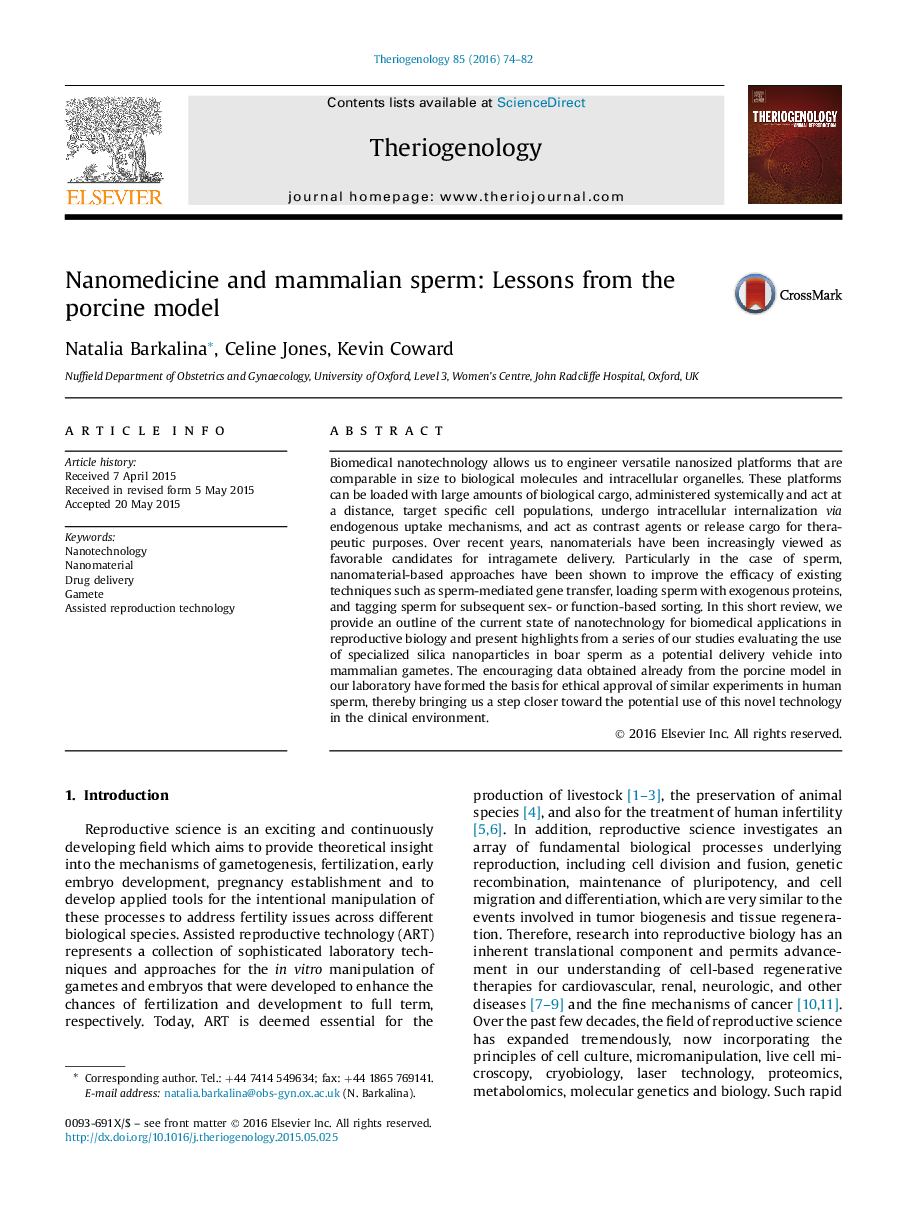| Article ID | Journal | Published Year | Pages | File Type |
|---|---|---|---|---|
| 2094935 | Theriogenology | 2016 | 9 Pages |
Abstract
Biomedical nanotechnology allows us to engineer versatile nanosized platforms that are comparable in size to biological molecules and intracellular organelles. These platforms can be loaded with large amounts of biological cargo, administered systemically and act at a distance, target specific cell populations, undergo intracellular internalization via endogenous uptake mechanisms, and act as contrast agents or release cargo for therapeutic purposes. Over recent years, nanomaterials have been increasingly viewed as favorable candidates for intragamete delivery. Particularly in the case of sperm, nanomaterial-based approaches have been shown to improve the efficacy of existing techniques such as sperm-mediated gene transfer, loading sperm with exogenous proteins, and tagging sperm for subsequent sex- or function-based sorting. In this short review, we provide an outline of the current state of nanotechnology for biomedical applications in reproductive biology and present highlights from a series of our studies evaluating the use of specialized silica nanoparticles in boar sperm as a potential delivery vehicle into mammalian gametes. The encouraging data obtained already from the porcine model in our laboratory have formed the basis for ethical approval of similar experiments in human sperm, thereby bringing us a step closer toward the potential use of this novel technology in the clinical environment.
Related Topics
Life Sciences
Agricultural and Biological Sciences
Animal Science and Zoology
Authors
Natalia Barkalina, Celine Jones, Kevin Coward,
